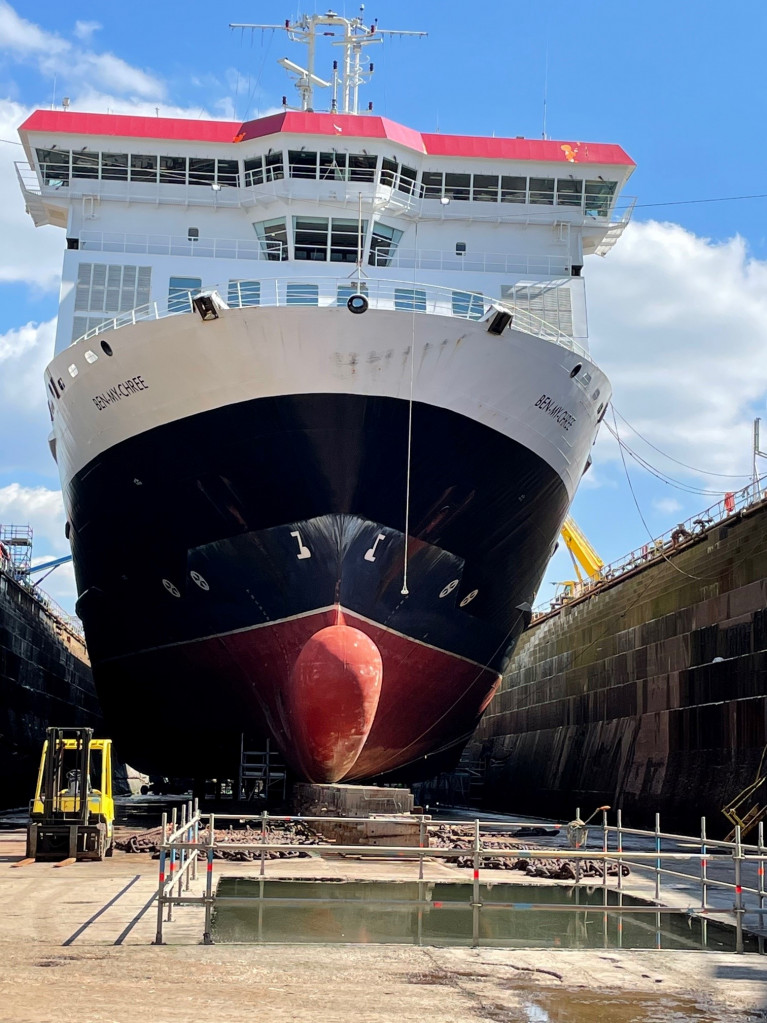The Isle of Man Steam Packet's Ben-my-Chree will head back to the Island (today, 2 June), more than seven weeks after heading intoa dry dock for refit (at Cammell Laird shipyard on Merseyside).
The company's freight and passenger ro-pax ferry has been out of service since 13 April, and was initially expected to be back in action early last month.
However, the return was delayed after a detailed inspection identified issues with the stern tube bearings, requiring work by a specialist third-party company.
The operator had hoped the work would be completed in time for the 'Ben' to return to service at the end of May.
A spokesperson for the company has confirmed the ferry was due to leave the shipyard (today), but that has been delayed after the tug that was due to bring the vessel out of the dock broke.
More from Manx Radio including an audio link.
Afloat however adds that the main Manx ferry this morning still remains on Merseyside at the Birkenhead based shipyard.
For information on alternative fast-ferry sailing schedules visit the operator's website here.



























































